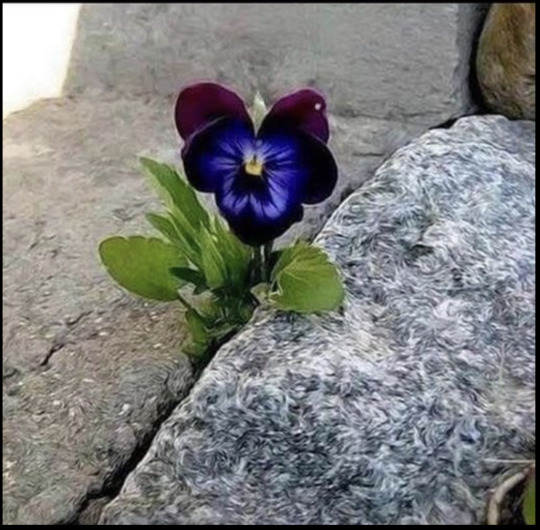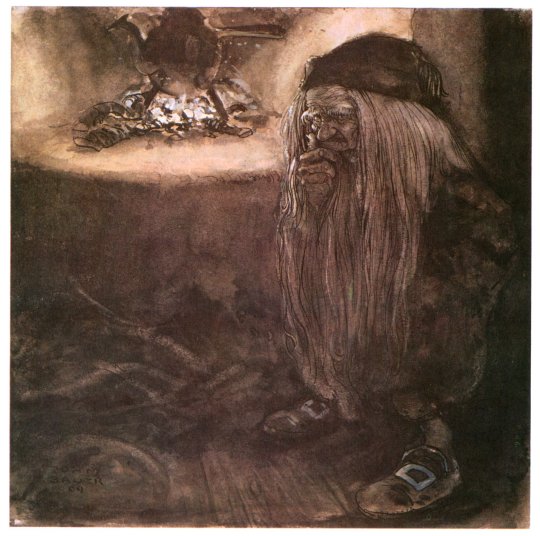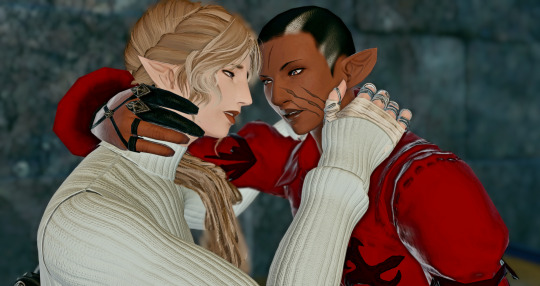#tenacity
Text

TENACITY
te·nac·i·ty - noun
the quality or fact of being very determined; determination.
the quality or fact of continuing to exist.
Build your TENACITY 🤔
#pay attention#educate yourselves#educate yourself#knowledge is power#reeducate yourself#reeducate yourselves#think about it#think for yourselves#think for yourself#do your homework#do some research#do your own research#ask yourself questions#question everything#tenacity#definition#words#powerful words#strength#wisdom
120 notes
·
View notes
Text

Untitled.
93 notes
·
View notes
Text




The Parting
pt 2
Ser Erembourc Boucher was barely 22 Summers old when they left Ishgard. Walking away from their title, their House, and their Intended. They traveled in and out of Coerthas for years, occasionally returning to Ishgard to train fencing students before leaving for months or years at a time.
Ser Ténacité Archambeau, Knight Dragoon and Fourth Daughter (derogatory) would never marry. She suffered horrific injuries during the Dragonsong War, but refused retirement. Instead she remained on, training new dragoons through the end of the war.
#erembourc#tenacity#ténacité#these are npcs I've had for ages and decided they deserved complicated interconnected backstories#i play with elf barbies and make them kiss#erembourc is they/them#ténacité is she/her#there's a second part to this i just need to fight some crime to make it happen
21 notes
·
View notes
Photo

If we could see the miracle of a single flower clearly our whole life would change.
~Buddha~
#flowers#pansies#blossom#blooming#beauty#resilience#overcoming#between the rock...#nature#perseverance#tenacity#rocks
91 notes
·
View notes
Text
75 notes
·
View notes
Text
Gnomes: A Masculine Role Model?
Upon occasion on the internet, I see people searching for good, healthym non-toxic male role models. Such searches often yield a variety of different figures, real and fictional. However, I have yet to see the objects of my own field of study mentioned in such discussions, and so I wish to put them forward: I believe gnomes to be good examples of healthy masculinity.
When elaborating upon this, I will be using the terms 'masculine' and 'masculinity' rather than 'man' or 'male'. The reasoning is obvious, not all gnomes are male or men. Rather, I believe it is traditional gnomeic cultural markers which can provide the fine example of a healthy form of masculinity for any human who wishes to pursue such an ideal.
As I have mentioned in previous posts, my theory regarding gnomes is that, for them, existence and culture are one and the same. If an earth spirit did not wish to embody the cultural archetype of the gnome to some degree, it would not take the form of a gnome. Thus, for a gnome to exist physically is for it to partake in gnomish culture.
With this in mind, let us consider the archetypal gnome.

[Above: John Bauer, Swedish Folk Tales Illustrations]
I believe the cornerstone and foundation of 'gnomishness' to be respect. Respect for nature, respect for others, respect for themselves. Existence as a gnome is to respect corporeality and all other physical things. Respect for existence itself. The boundaries between forms, their shapes and limits, what can and cannot be done by one shape to another shape. To get more specific, I see gnomish respect as a matter of autonomy. Gnomes are often depicted as individualists, they live on their own terms. Yes, the gnomes' shared culture means that their lives will often superficially look similar but this does not mean that they aren't still living on their own individual terms. A gnome respects itself and it's wants and needs. It also equally respects others. It's all about respect, above and beneath all other things. This is the most admirable of the gnomes' traits.
Other traits strongly associated with gnomes are resourcefulness and tenacity. Gnomes are often defined by their labour, by their work. Gnomes are inherently tied to the earth, usually to guard and maintain it. They were often depicted as deep folk bearing the tools and garb of miners in times of old. Nowadays they are more typically depicted as gardeners, though this is no less a tie to the earth nor a lesser occupation for them. They were consistently spoken of as great craftsmen and have evolved in more recent pop culture as being depicted as brilliant tinkerers, inventers and scientists. A departure from their roots, perhaps, but still a depiction which unifies their culture under a profession. In truth, it does not matter what work a gnome will find for itself - it will find work, as a gnome finds beauty in its labours, for it's toil is self-directed and a product of passion. Gnomes are often taken to crafts and the arts as well as conventional forms of labour. To a gnome, taking the time to compose a song or paint a picture is no less important. It is all part of constructing their lives. This is a gnomeic cultural trait. Gnomes choose to exist because existing is interesting and fun and a challenge compared to being an incorporeal spirit of the earth. Gnomes are small creatures in a big world and they work hard to make a place for themselves in it because they love the world and they love themselves. They work hard, they play hard.
This ties in well to another notable trait of gnomekind. Strength. Gnomes are strong and hardy. This is hardly surprising considering what they are and what they contend with. To a gnome, a fox or dog or common house cat are vast and powerful kaiju to be feared in a way a human would fear encountering a T-Rex. But admiring the trait of strength is less about strength itself and more about the reason behind the pursuit of strength. This is the greater and more noble pursuit of fulfilment. Gnomes do not coast through life without examining themselves, what they want and what they stand for. This takes strength, not just of form but of character. So, to build a life, one must build strength, explore who they are, their drives, their thoughts and their feelings. It is a hard thing to do, I admire those who are able to communicate with themselves so eloquently.

[Above: Jakub Rozalski, Forbidden Fruit]
When these traits are considered and viewed together, the view of gnomes becomes one of rugged cowboys, frontier homesteaders, romantic poets and proletarian labourers all rolled into one, rather than simply as rosy-cheeked lawn ornaments. With this said, gnomes are rosy-cheeked, good natured and whimsical! Gnomes are individualists, yes, but they are gregarious and form strong bonds of community and friendship! Just as no man is an island, neither is a gnome. To be a gnome is to love life, another unifying trait which underlines all of the others.
So, here we have some good, key gnomish cultural traits. Not all of them, but prominent examples.
Before I conclude, I will address a potential elephant in the room. All of these traits are not exclusive to masculinity, men or maleness. Anyone can embody and uphold ideals such as respect, tenacity, strength, and so on. I have no desire to try and enforce any gender roles nor to try and dictate how anyone should live their lives, please do not take this post to indicate as such.
I do not believe that these traits are inherently masculine on their own. Rather, when I think of masculinity and try to reason what it even is, I believe it is more about sets of traits, taken together, which can help to define it, rather than the individual qualities themselves. The whole being greater than the sum of the parts, one might say. I think the specific traits of gnomish culture mentioned form a picture of what healthy masculinity can look like when combined. Not the only kind of masculinity, by any stretch, but a form of it!
I do hope this makes good sense and seems well reasoned. I am a gnomologist and not a sociologist. Gender studies are not quite my forte! But gnomes have always struck me as good role models and I do think that they can be viewed specifically through the lens of masculinity quite aptly also. I think if we chose to live life as gnomes do - full of respect, wonder and joy - then it may be the key to a heartier, healthier, happier life. So, if you or any in your life are wondering how best to be a modern man, consider gnomes as a fine example.
As always, I welcome peoples' notes and opinions, wisdom comes when we share our thoughts.
#gnomes#gnome posting#gnomeposting#gnomology#the bright green#ecognomics#role model#masculinity#gender#Respect#Tenacity#Resourcefulness#Strength#fulfilment#Jakub Rozalski#John Bauer
27 notes
·
View notes
Text
You carry character with you wherever you go, and it allows you to prevail against adversity.
Dr. Jordan B Peterson
#Dr Jordan B Peterson#Jordan B Peterson#Jordan Peterson#character#adversity#strength#resilience#optimism#courage#fortitude#tenacity#stoicism#coping#responsibility#healing#recovery#personal growth#personal development#strength of character#breakup#heartbreak#moving on#quotes
110 notes
·
View notes
Text

Reinvent yourself, no matter how many times you get burned. It’s called tenacity.
.
.
#rising from the ashes#tenacity#don’t give up#keep going#life will get better#hope#soulinkpoetry#poetry#she writes#thoughts#feelings#poets on tumblr#that’s life
54 notes
·
View notes
Text

COOL NEW SHIRT ON AMAZON! Easy purchase and delivery for PRIME MEMBERS!
#shirt design#artists on tumblr#sticker art#student life#studying#college#funny shirt#funny shit#humor#lol#memes#haha#amazon#unique gifts#lol memes#tshirt#sweatshirt#pop art#determination#tenacity
11 notes
·
View notes
Text

Tenacity
Thistle Bay, Cape Le Grande National Park.
On my travels
#original photographers#nature photography#landscape photography#tenacity#Thistle Bay#Cape Le Grande#National Park#on my travels
34 notes
·
View notes
Text

12 notes
·
View notes
Text




The Reunion
pt 1
Ténacité received exceptional damage in a dragon siege not long after the Battle of Carteneau. Losing both legs and suffering from burns and numerous broken bones, she was nearly forced into retirement. A gracious anonymous donation provided her with prosthetics and accommodation in order to help her return to training her fellow dragoons, though she would never see intense battle again.
Erembourc traveled far once they'd heard of their former betrothed's accident. Though the pair hadn't seen much of each other in nearly two decades, the reunion was sweet.
#Ténacité#tenacity#erembourc#am i happy with these no but here you go mostly happyish ending#they hook up on occasion but erembourc still kind of avoids ishgard where possible#and tennie is a workaholic
15 notes
·
View notes
Text

What is grit? I’ll get to that later. First, a preface:
Since November 2017, I have read applications for an honors program at a prestigious American university. This is my first time serving on any kind of admissions committee.
It’s worth noting that I am not a general admissions officer. Unlike those in general admissions, I am not combing through thousands of applicants, filtering students for standardized test scores and GPAs. Instead, I’m working my way through about 200 applications for a very small cohort of students. My focus is not on the hard numbers (others are taking care of that) but on substance: a student’s extracurricular involvement, signs of maturity and leadership, writing ability, creativity, and fit.
I’m still learning what makes a strong applicant, what exactly makes one applicant stand out while others don’t. But in my brief admissions experience, I can attest to the value of “grit,” a term that, for me, is nearly synonymous with narrative.
Most applicants need to tell a convincing story. Allow me to illustrate.
Candidate #1 has taken as many AP classes as possible at his prestigious high school. His parents are a university professor and a mechanical engineer. The candidate plans to double major in mechanical engineering and physics. He has a 1570 SAT score and a 4.0 unweighted GPA, founded a successful technology company, captains his high school soccer team, and is class president. His essays detail success after success, including his contributions to a Fortune 500 boardroom meeting. Everything this candidate touches turns to gold.
Candidate #2 has taken all of the four AP courses offered at her small high school in a rural town. The candidate plans to double major in biology and English with the goal of going to medical school. She has a 1480 SAT score, a 3.8 unweighted GPA, is the president of an organization devoted to teaching young girls how to code, and is involved in several other school organizations. Her essays include stories about her growth since her parents’ divorce and how she dealt with embarrassment following a failed speech she delivered while running for class president.
Both of these are very strong candidates. Of course, there are layers to each of these applications that we don’t have space to get into here, but which of these two candidates do you think I and other admissions readers are more excited about?
Though an Excel spreadsheet might be thrilled by candidate #1, most human readers will feel more compelled by #2. She has excellent grades and extracurricular involvement, though not quite as superb as #1.
Sure, candidate #1 is a star, and he will get into all or most of the universities he applies to. But candidate #2 has a story: she’s a fighter. I’m excited to meet her. I’m excited to see her growth in college, and I’m pulling for her to succeed.
For me, though both are strong writers, the narrative of growth detailed in candidate #2’s essays is far more compelling than the repeated success described by candidate #1.
Don’t get me wrong; candidate #1 is an admissions dream. His numbers are stellar and his writing is strong. But I get no sense from candidate #1 that he’s had to struggle to get to where he is. So, while he is undeniably gifted, his application leaves me wondering: what will happen when this student has to deal with failure? I’m not sure. And I’m not uniquely invested in watching his growth because it seems as if he’s pretty close to the mountaintop already. Without a narrative progression—from failure to success, from ignorance to knowledge—I don’t feel particularly compelled by this candidate’s story.
Candidate #2 tells me exactly what will happen when faced with failure. She’ll feel defeated momentarily, but she’ll get back up in a day or two and fight. In other words, she has that ill-defined quality that admissions officers love: grit.
Grit isn’t simply a matter of facing adversity. According to University of Pennsylvania psychologist Angela Duckworth, author of Grit: The Power of Passion and Perseverance, grit means, among other things, persistence.
“Grit is passion and perseverance for very long-term goals,” Duckworth explains in her 2013 TED talk. “Grit is having stamina. Grit is sticking with your future, day in, day out, not just for the week, not just for the month, but for years, and working really hard to make that future a reality. Grit is living life like it’s a marathon, not a sprint.”
According to Duckworth’s psychological studies, grit is a more reliable predictor of future success than SAT scores, IQ scores, or academic pedigree. In fact, grit, according to Duckworth, “is usually unrelated or even inversely related to measures of talent.” In other words, talent has much less to do with success than perseverance and passion do.
This explains why candidate #2 is, to me, much more compelling than candidate #1. Candidate #1 portrays himself as naturally gifted, a prodigy. But I’m more convinced that candidate #2 will thrive in the face of challenges she will face in her academic and professional life.
My point in introducing these two candidates is to illustrate that a “gritty” narrative can go a very long way in getting colleges excited about your potential. If you have a 4.0 unweighted GPA, a 1570 SAT score, a stellar record of extracurricular activities and AP classes, then you don’t need all that much help getting into your university of choice. But if, like most applicants, you have some relative weaknesses in your application, then you need to focus on establishing the “grit” necessary—and a narrative to match—to make you a competitive applicant.
So, how can you be gritty? Find something you’re passionate about. Pursue that passion with as much energy as you can muster. Face difficulties with as much perseverance as you can. While you might face failure in the short term, colleges are confident that grittiness, more than apparent genius, will pay off in the long run.
Whether you fail, succeed, or are midway through your journey, be sure to relay those stories—rather than static portrayals of unending success—in your college applications. It just might be what gets you into college.
2 notes
·
View notes
Text

tenacity in winter light
#img_2484#fence#texture#tanacity#struggle#vine#birck#suburban#photographers on tumblr#victoria#melbourne#australia#northcote#white picket fence#suburbia#j.g. ballard#brick#tenacity
7 notes
·
View notes
Text
Shoveling
What it takes to dig a hole is to put a shovel
into the ground, once to breach the surface,
to tear off the façade of what you are about
to accomplish, see the discoloration of earth
that signifies entering another realm beneath
that which comforts you, and then to apply
that dull blade over and over and again into
whatever it is that gets in the way of creating
a space within the world to which point had
not existed, deepening, widening, shoveling
away one hard-earned scoop at a time until
you are satisfied.
-GeorgeFilip
#poem#poetrythreesixfive#poetry#georgefilip#spilledink#poetryportal#poetsandwriters#poetsontumbler#spilledwords#deepthoughts#shoveling#working#ambition#tenacity#resilience
2 notes
·
View notes